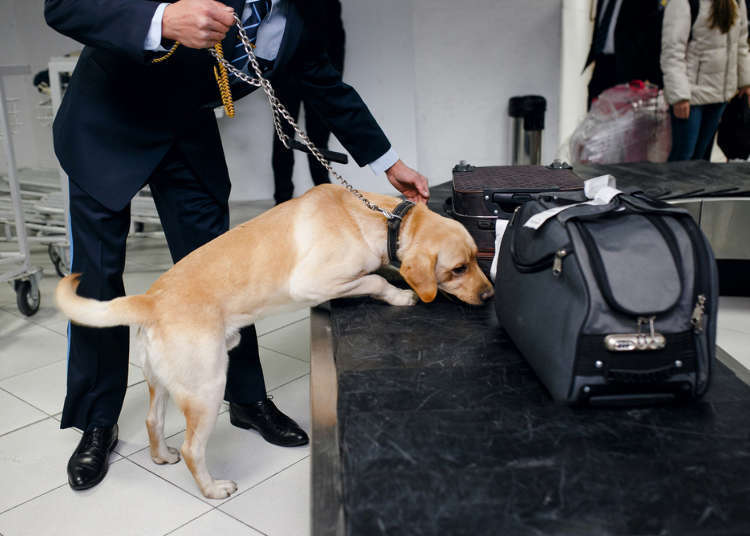
Japan Customs Restricted Items: Careful! Things You Can and Can't Bring Into Japan
- Written by: Yoko
When traveling, it is important to be cautious about your belongings. Japan's customs officials thoroughly inspect your luggage. Japanese customs restricts a variety of items.
Regardless of whether it is an item you always carry with you or a gift for a friend, if it is prohibited by Japanese law, it will be confiscated. In some cases, you may even face punishment by the authorities or be denied entry.
Saying "I didn't know" won't be accepted as an excuse. Therefore, it is essential to double-check what you can and can't bring into Japan before packing your luggage.
- Table of Contents
-
- Items that are prohibited for import and can’t be brought into Japan
- Meat products, animal-derived products restricted by Japan Customs
- Plants restricted by Japan Customs
- Counterfeit goods such as money, bank notes, securities, credit cards and others
- Items that are restricted and require a procedure to bring into Japan
- Items that are controlled by the Washington Convention
Items that are prohibited for import and can’t be brought into Japan
We will first go over items that are prohibited for import. If you try bringing in the following items, not only will they be confiscated and destroyed, but there is a possibility of being punished by law.
At first, you may think plants and vegetables aren’t a big deal, however, there are some surprising items.
Meat products, animal-derived products restricted by Japan Customs

Most meat products and animal-derived products are not allowed in Japan.
In many countries, there are livestock diseases, and there is a fear of infectious diseases spreading from meat products.
This applies to raw meat, processed goods, airtight goods, and leftover food from the plane.
The following meat items are prohibited in Japan even if it is for personal use or gifts. However, items with inspection certificates issued by the government agency of the exporting countries are excluded.
- Even-toed ungulates (hoofed animals) such as cows, pigs, goats, sheep and deer, poultry such as chicken, quail, pheasant, ostrich, helmeted guineafowl, turkey, duck and geese, horse, dogs, rabbits and items derived from honey bees
- Meat, intestine – raw, frozen, processed products
- Eggs – applies to shells
- Bones, fat, blood, skin, fur, feathers, horns, hoof, and tendon – however, this doesn’t apply to leather bags, wool sweaters
- Raw milk, semen, fertilized egg, unfertilized egg, feces, urine
- Dairy products – excluding portable items 10kg or less that are not for sale or business use
- Straw of grains and hay for feed (applies to some regions)
Beef jerky, ham, sausage, bacon, and meat buns are also prohibited in Japan. This means if you purchase a hamburger before your flight, you can’t bring it into Japan, so make sure to finish eating it before or during your flight.
Also, if you visit a farm, interact with livestock, or have golf shoes with dirt, you are required to report to the animal quarantine station. Some places have shoe sole disinfection; however, you must make self-declarations. You may be pushed by law if you miss or falsify your declaration.
Can I bring cheese into Japan?
Cheese is subject to animal quarantine regulations for dairy products. Processed cheese can be brought into Japan. Cheese brought in personal baggage accompanying a person arriving from a foreign country may be exempted from animal quarantine requirements, provided it is less than 10kg in weight.
Additional information can be found at: https://www.maff.go.jp/aqs/topix/dairy_products_en.html
Plants restricted by Japan Customs
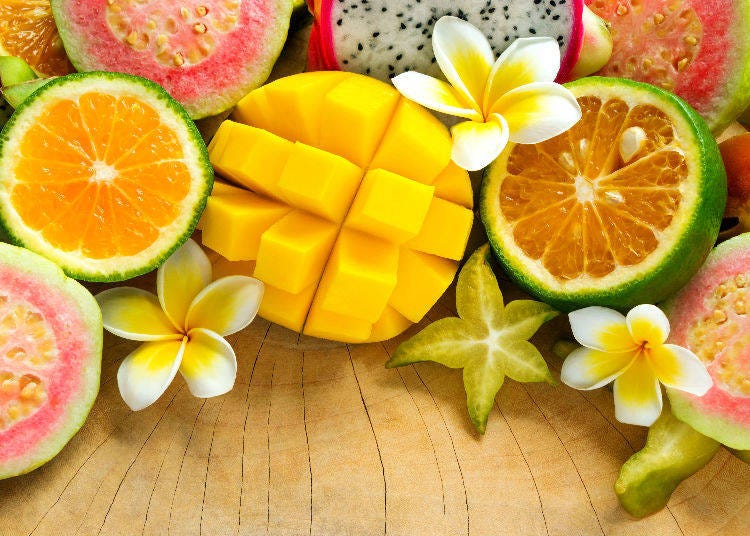
To prevent pests that harm plants entering Japan, the following plants are prohibited.
- Mango, legan, Capsicum, mangosteen, guava, lychee, and most fruit and fruit vegetables such as citrus fruits – countries and regions that have Mediterranean fruit fly and bactrocera dorsalis (such as Europe, Africa, Central America, South America, Australia, Middle East, and Southeast Asia)
- Apple, pear, peach, nectarine, cherries and walnuts with shells – countries and regions that have codling moth (such as North America)
- Sweet potatoes – countries and regions such as Asia, Africa, Hawaii, Australia, and Africa
- Citrus seedlings such as anthurium seedlings – countries and regions such as America and Hawaii
- Straw – countries and regions such as Europe, America, Canada, New Zealand
Some people plan to gift these types of fruits; however, since they are not allowed in Japan, make sure they don’t go to waste.
Other plants can’t be brought in due to pests discovered in different countries and regions. Double-check with the Plant Quarantine Station's website if you plan on bringing plants to Japan. Also, plants with dirt on them can’t be brought into Japan, so if you do bring some over, make sure to declare them at the Plant Quarantine Station.
Items that will infringe on intellectual property such as fake brands and counterfeit goods
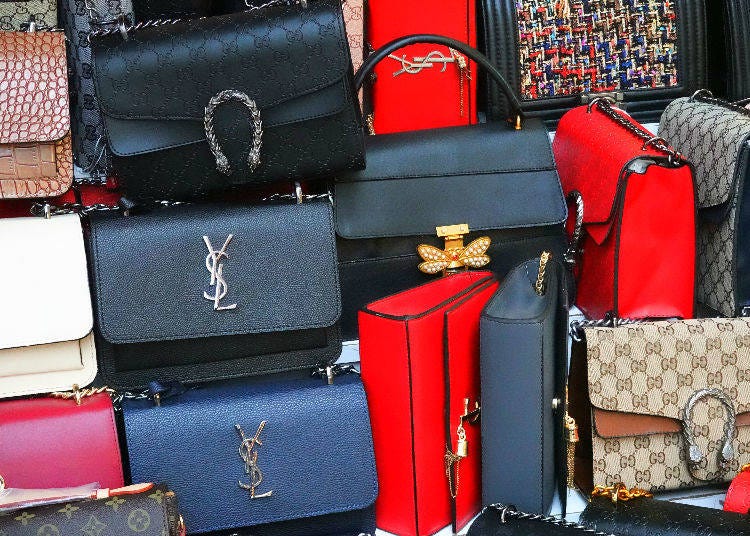
Bringing in items that infringe on intellectual property, such as fake brands and counterfeit goods, is illegal. Not only do these products obstruct Japan’s industrial growth, but they also can supply resources to criminal organizations and terrorist groups; for this reason, customs are strengthening their regulation.
Even if the owner believes it is authentic, it will be confiscated if the customs inspections determine that it’s fake. Saying “I didn’t know” won’t be enough, and if you knew about the item being fake, it was a crime. It also won’t be allowed to be brought into Japan temporarily. This also applies to products such as copied music CDs and animations, and movie and drama DVDs.
Obscene magazines, DVD, child pornography, and others

Books, drawings, carvings, and other items that harm public security and customs are prohibited in Japan. Even if they are not meant to be sold and are for personal use, obscene magazines and DVDs are not allowed.
Illegal drugs
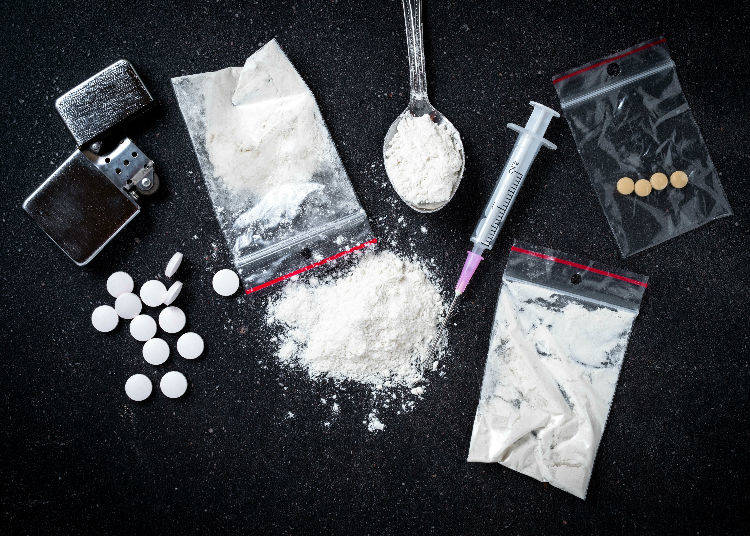
Narcotics such as opium, cocaine, heroin, MDMA, magic mushrooms, stimulant drugs (stimulant drugs contained in an inhaler or items containing stimulant drug ingredients), cannabis, opium smoking paraphernalia, and psychotropic drugs are not allowed in Japan. In many cases, such items are in luggage received from other people, so be careful.
In addition, while CBD oil and related products are legal in Japan, they must be completely THC (tetrahydrocannabinol)-free.
Firearms such as pistols, and bullets and firearm parts
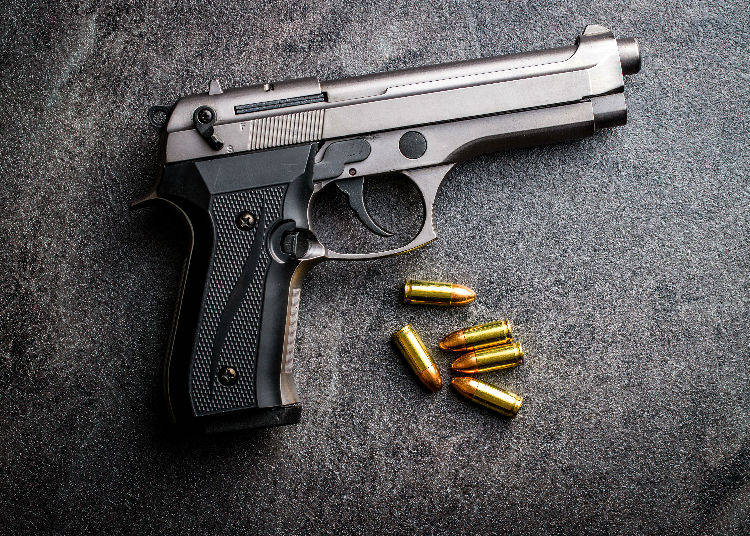
Firearms such as pistols, rifles, machine guns, and firearm parts are prohibited. Even if these weapons are allowed in your country, they are prohibited in Japan.
Explosives, gunpowder, chemical weapon materials, and pathogens such as anthrax bacterium
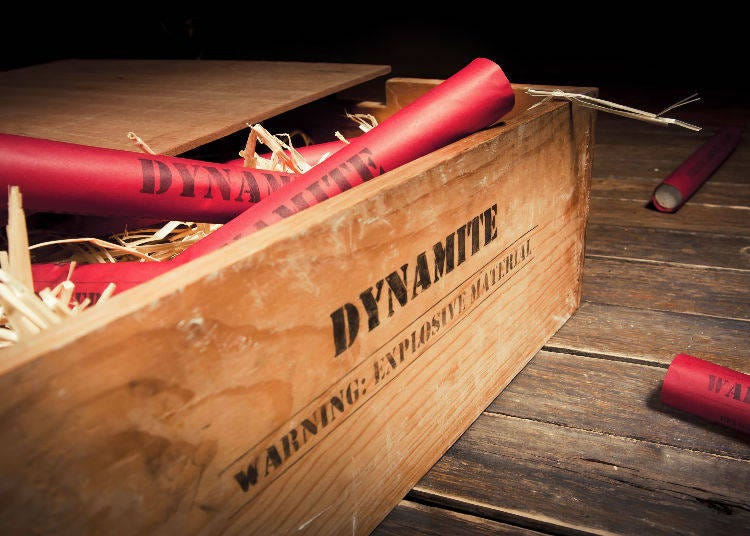
Explosives such as dynamite and gunpowder are prohibited. Also, drugs specified in Article 2, Paragraph 3 of the Act of Prohibition of Chemical Weapons and Regulation of Specified Substances, and Type 1 pathogens specified in Article 6, Paragraph 20 of the Act on Prevention of Infectious Diseases and Medical Care for Patients with Infectious Disease and type two pathogens specified in paragraph 21 are prohibited.
Counterfeit goods such as money, bank notes, securities, credit cards and others

Counterfeit goods and crafts such as currency, securities credit cards are prohibited, also this applies to postage stamps and revenue stamps.
Items that are restricted and require a procedure to bring into Japan
Some items can be brought into Japan if they meet certain conditions. The conditions will vary depending on the object; some may require prior procedures, and others require declaration when you arrive.
Meat products
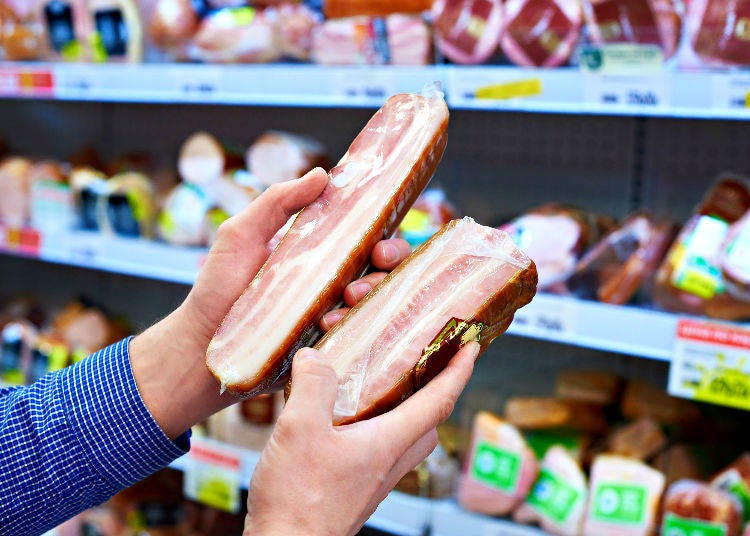
Most meat products can’t be brought into Japan; however, there are times when items attached to an inspection certificate for Japan are permitted. There are possibilities where products from America, Australia, and New Zealand have inspection certificates issued by the government agency for exporting attached.
However, the inspection certificate will become invalid if the product seal is broken before the animal quarantine inspection.
Plants

Some fruits, vegetables, grains, cut flowers, seeds, saplings, and dry flowers such as pineapple and orchid cut flowers are allowed to be brought in. However, many items require a certificate of inspection issued by the exporting government agency attached.
Plants without a certificate of inspection will be disposed of under the Plant Protection Act. Make sure to submit the plant t with the certificate of inspection at the Plant Quarantine Station and receive the plant inspection certificate seal before heading to customs inspections. Once it has been confirmed that there are no pests, then it can be brought into Japan.
Animals such as cats and dogs

When bringing over pet dogs and cats, import inspections for rabies and leptospirosis (dogs only) are required. Cats and dogs that have met import conditions can finish their inspection in a short duration; however, if the conditions are not met, they will have to be inspected in the holding facility at the Animal Quarantine Station for a maximum of 180 days.
After the inspection, there are cases where the animal may not be permitted; this applies to assistance dogs such as guide dogs, service dogs, and hearing dogs. Also, inspections for rabies will be conducted for raccoons, foxes, and skunks. Remember that the individual will be burdened with these inspection fees. If you plan on bringing over an animal, contact the Animal Quarantine Station beforehand and start preparations early.
Items that are controlled by the Washington Convention
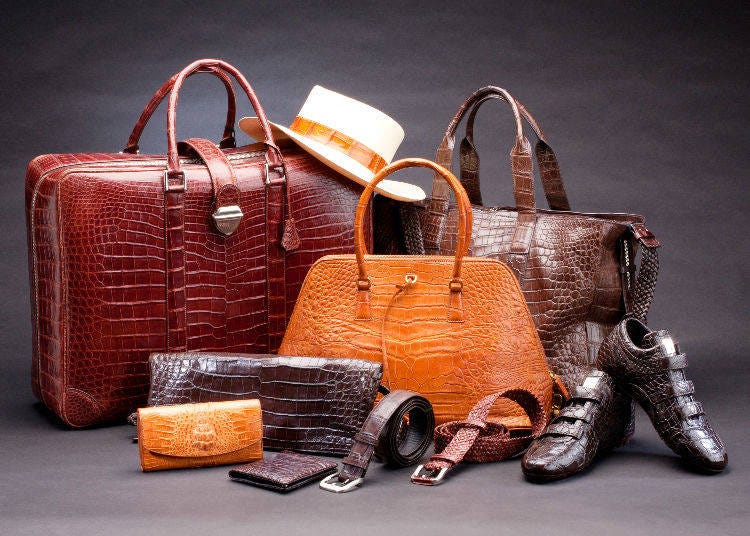
The Washington Convention (Convention of International Trade in Endangered Species of Wild Fauna and Flora) controls the import of many animals and plants. This applies to fur, leather products, and things that have been commercialized, such as traditional Chinese medicine. Importing these items requires documents designated by the Washington Convention, such as a permit from the exporting country and an import approval certificate by Japan’s Ministry of Economy, Trade and Industry.
- Fur, rug – tiger, leopard, bears and others
- Belt, wallet, handbags, and others – crocodile, sea turtle, snakes (some species), lizards (some species), ostriches (some species) and others
- Ivory, ivory products – Indian elephants, African elephants
- Taxidermy – eagle, hawk, crocodile, pangolin
- Chinese herbal medicine - items that include ingredients of tiger, bear, musk deer, and others
- Musical instruments -: musical instruments that use snake skin (kokyu)
- Others – tridacna products, parrot feather decoration, peacock feathers (certain section), sturgeon egg (caviar), European eel products, and food and medicine that includes ginseng, carrot fern, costus, gastrodia elata, and agarwood
- Monkeys (all species) – Slow Loris, crab-eating macaque, chimpanzee
- Parrots (all species) – Cockatoo, parakeet (excluding rosy-faced lovebird, budgerigar, cockatiel and rose-ringed parakeet)
- Plants – all types of orchids, all types of cactus and others
- Others – eagle, hawk, tortoise, Indian python, Asian arowana
Medication, cosmetics

Even if it is for personal use, there is a limit on how many medication and cosmetics you can bring in.
・Medication, quasi drugs – volume of two-month’s consumption or less (within one-month’s consumption or less for prescription drugs)
・Medicine for external use (excluding prescription drugs) – 24 pieces or less of normal size per item
・Cosmetics – 24 pieces or less of normal sizes per item
・Medical equipment (including electric massage equipment and thermometer) – 1 set (for home use only)
If you wish to bring in more than the limit, necessary procedure by the Ministry of Health, Labour and Welfare will be required. Medicine that you can bring in is limited to two month’s consumption, however sleeping medication that require doctor’s instruction is limited to one-month’s consumption or less. Be aware that items that are regarded as quasi-drug maybe be considered medicine in Japan, in that case it will be treated as medicine. Also disposable contact lens that many people carry when traveling is limited to two-month’s consumption.
*Calculating two-month’s consumption for medication:
In the case of taking 2 tablets three times a day (2 tablets x 3 times) x 30 days x 2 months = 360 tablets for 2 months.
Hunting rifles, air guns, blades (more than 14 cm blade length), swords (more than 55 cm blade length) and others
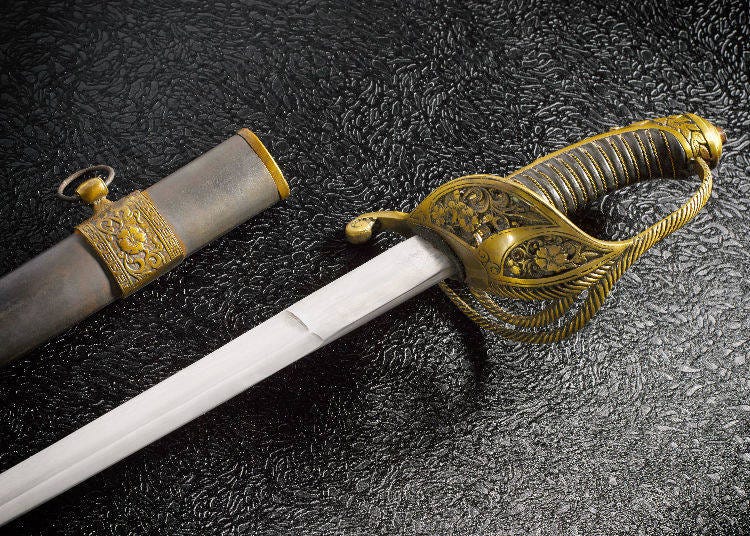
In Japan, if you wish to import hunting rifles, air guns, and swords, you need to obtain possession permission from the Prefectural Public Safety Commission. Possessing weapons is fundamentally prohibited under the Firearms and Swords Control Act due to the high possibility of weapons being used in crime or accidents. The Firearms and Swords Control Act article 14 lists items allowed to be possessed or imported, such as “ancient firearms such as matchlocks that have art or antique value, or swords with art value.”
Many things can’t be brought into Japan. Having issues when entering the country could ruin your trip, so make sure to check what requires permission beforehand. We recommend asking specific agencies for instructions if you are unsure of certain items.
- Japan Customs: http://www.customs.go.jp/english/index.htm
- Animal Quarantine Station: http://www.maff.go.jp/aqs/english/
- Plant Quarantine Station: http://www.maff.go.jp/pps/j/information/languages.html#en
After working as a ground hostess and web director, she became an independent writer in 2013. She writes extensively on topics such as relationships, family issues, and Japanese culture. Airports and military bases are her favorite relaxation spots.
*Prices and options mentioned are subject to change.
*Unless stated otherwise, all prices include tax.
Popular Tours & Activitiess
Recommended places for you
-

ISHIDAYA Hanare
Yakiniku
Kobe, Sannomiya, Kitano
-
Goods

Yoshida Gennojo-Roho Kyoto Buddhist Altars
Gift Shops
Nijo Castle, Kyoto Imperial Palace
-

Kanzenkoshitsuyakinikutabehodai Gyugyu Paradise Sannomiya
Yakiniku
Kobe, Sannomiya, Kitano
-
Appealing

Rukku and Uohei
Izakaya
Sapporo / Chitose
-

Jukuseiniku-to Namamottsuarera Nikubaru Italian Nikutaria Sannomiya
Izakaya
Kobe, Sannomiya, Kitano
-

Kambei Sannomiyahonten
Yakiniku
Kobe, Sannomiya, Kitano
-

Get Ready to Catch 'Em All! First Ever Permanent Outdoor Pokémon Park Opening Near Tokyo!
-

Don't Miss Out! The One Thing You Must Do Before Shopping at Mitsui Shopping Park LaLaport: Get Your Max 10% OFF Coupon Book
-

2025 Autumn Colors Report: Kurobe Gorge Nearing Peak
by: Timothy Sullivan
-

Black Friday 2025: These Are THE Japan Travel & Shopping Deals to Check Out
-

2025 Japan Autumn Color Report: Tokyo's Ginkgo Trees Starting to Glow
by: Timothy Sullivan
-

Enjoy Japan's Gorgeous Winter Lights! Ride the Romancecar to Shonan no Hoseki Illumination
by: Guest Contributor
-

Tokyo Gourmet Gals: Complete Shopping and Touring Guide to Asakusa “EKIMISE” by Two Asian Ladies!
-

Why Osaka Tennoji Zoo is So Popular with Foreign Tourists (Guide & Highlights)
-

3 Yakiniku Restaurants in Sapporo with the Best Japanese Beef Around!
-

According to a Local: 6 Unique Ways Japanese Keep Cool in Summer!
-

Tokyo's Crazy 'Electric Town': Inside Guide to Akihabara's Top 10 Home Electronics Shops
-

Inside Kyoto's Spectacular Sanjusangen-do Temple with 1,000 Gold Statues
- #best sushi japan
- #what to do in odaiba
- #what to bring to japan
- #new years in tokyo
- #best ramen japan
- #what to buy in ameyoko
- #japanese nail trends
- #things to do japan
- #onsen tattoo friendly tokyo
- #daiso
- #best coffee japan
- #best japanese soft drinks
- #best yakiniku japan
- #japanese fashion culture
- #japanese convenience store snacks















